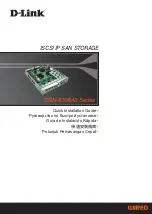
Wiring inputs and outputs
TruVu™ VVTZC
-E2
©2022 Carrier.
Installation and Start-up Guide
All rights reserved.
57
10
To set the heating minimum airflow, click
Heat Min
, then type the damper position. We recommend that the
sum of this setting for all zones in the system be equal to the minimum heat CFM (liters/second)
requirements of the air source.
11
Repeat steps 1 through 10 for each zone until all zones have been balanced.
Step 3: Set the system static pressure
For the air source to deliver the required airflow, you must set the bypass controller's static pressure setpoint high
enough to provide the demand but low enough to maintain reasonable noise levels. The bypass controller
maintains static pressure by controlling a damper or a supply fan VFD. You need the following data to set the
static pressure:
•
The air source’s design maximum airflow in CFM (liters/second) (manufacturer’s data)
•
The system’s design extern
al static pressure (inches or water). This is the amount of static pressure that the
air source is designed to deliver at its maximum design airflow in CFM (liters/second) (supplied by the
mechanical design engineer).
•
The maximum cooling or heating (whichever is greater) CFM (liters/second) requirements for all zones
connected to the air source
NOTE
The air source fan must have been tested and certified that it can deliver the above requirements.
The sum of the maximum CFM (liters/second) requirements of all zones will generally exceed the air source's
maximum CFM (liters/second) rating by 10 to 20%. This is by design and based on a factor known as diversity. It
works on the basis that under normal design heating and cooling conditions, not every zone will be 100% open.
Knowing this, you will need to force open only zones whose sum CFM (liters/second) is equal to the unit design
CFM (liters/second) . With the bypass damper fully closed (0%) or supply fan VFD at 100%, the bypass controller's
static pressure should be the controlling setpoint.
To set the static pressure:
1
Starting with zone furthest from the air source and working towards it, add up the maximum design CFM
(liters/second) airflow of the zones until
the sum equals the air source’s design CFM (liters/second) (+/
-5%).
Note each zone that you included.
2
For each zone noted in step 1, go to
Properties
>
Control Program
>
Configuration
>
Service Configuration
>
Pressure Dependent Control
>
Details
tab. Click
Cool Max
or
Heat Max
(whichever has the highest design
max airflow) to force the damper to its maximum open position.
3
In the tree, select the Bypass controller, then go to
Properties
>
Control Program
>
Status
. Note the
Static
Pressure
value, then go to
Unit Configuration
>
Bypass Control
>
Details
tab.
○
If
Damper Position
is 0% or
VFD Output
is 100%, enter the static pressure in the
Duct Static Pressure
Setpoint
field.
○
If the
Damper Position
is not 0% or
VFD Output
is not 100%, enter the static pr
.1” (.025 kPa) in
the
Duct Static Pressure Setpoint
field. Wait 1
–
2 minutes, then verify that the
Damper Position
is 0% or
VFD Output
is 100%. If not, repeat the process, adding .05” (.012 kPa) to the previous
Duct Static
Pressure Setpoint
until the
Damper Position
is 0% or
VFD Output
is 100%.
4
For each zone in the system that was balanced, go to its
Pressure Dependent Control
>
Details
tab, then
click
Automatic Control
to return the zone to normal control.
5
In the tree, select the air source controller, then do one of the following.
a)
For an RTU Open or WSHP Open controller, go to
Properties
>
Control Program
>
Configuration
>
Service
Configuration
>
Service Test
and disable
Service Test
and
Fan Test
.
b)
For any equipment whose wiring was disconnected to insure that only the fan only was running,
reconnect it the wires for normal operation.
CAUTION
You must complete steps 4 and 5 to prevent loss of temperature control to the space and to
maintain normal operation of the system.
















































